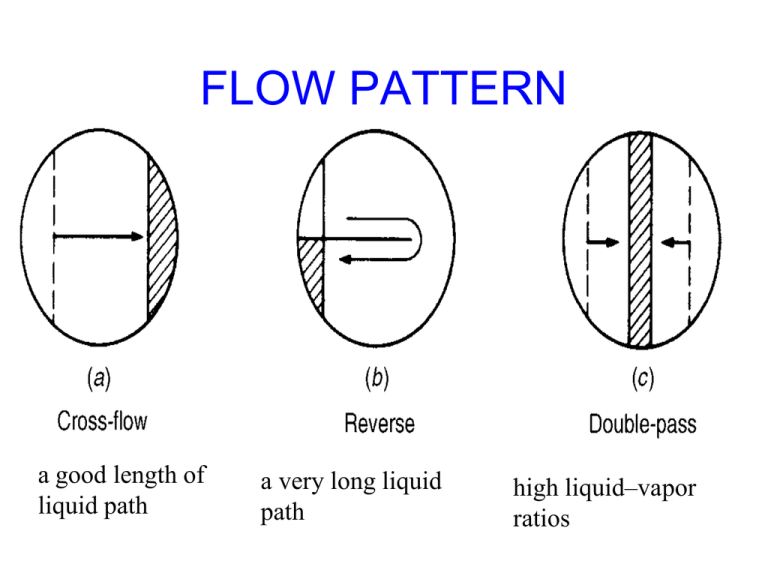Staged Column Design
advertisement

FLOW PATTERN a good length of liquid path a very long liquid path high liquid–vapor ratios FLOW PATTERN • Cross flow • Double pass SINGLE PASS DOUBLE PASS DOWN COMERS AND WEIRS WEIR • Straight Horizontal • Adjustable • Notched DOUBLE PASS SLOPPED DOWNCOMERS MECHANICAL SUPPORTS MANWAY TRAY HYDRAULICS CAPACITY GRAPH FOR A TYPICAL BUBBLE-CAP TRAY FLOW REGIMES CLOSE-UPS • Cellular foam • Froth (Operating regime) CLOSE-UPS • Emulsion regime • Froth regime TRAY EFFICIENCY Eo N eq Overall efficiencyN ac Efficiency correlation (O’Connell, 1946) Eo 0.52782 0.27511log10 0.044923log10 2 MURPHREE EFFICIENCY MODEL EMV yout yin * yout yin EML xout xin * xout xin It is possible to have * yout yout Thus, EMV 1 xout x4 x3 x2 x1 SIEVE TRAY LAYOUT • Net area • Hole area • Active area LIQUID PRESSURE HEADS ON SIEVE TRAY hdc hp hweir hcrest hgrad hdu PRESSURE HEADS ON BUBBLE CAP TRAY COLUMN DIAMETER uop ( fraction)u flood u flood K V MWv uop v Anet 3600 Anet ( Dia) 2 4 L v v K Csb 20 0.2 Dia Estimate W Csb from Csb VS Flv L Wv 4V MWv v ( fraction)u flood 3600 v L Capacity factor versus flow parameter ADIOS! • All of the references are provided during class lectures. • All of the pictures are taken from various books and Websites solely for educational purpose. • The author is thankful to Dr, Syeda Sultana Razia, associate professor, ChE, BUET, for developing the core concept of this presentation.











